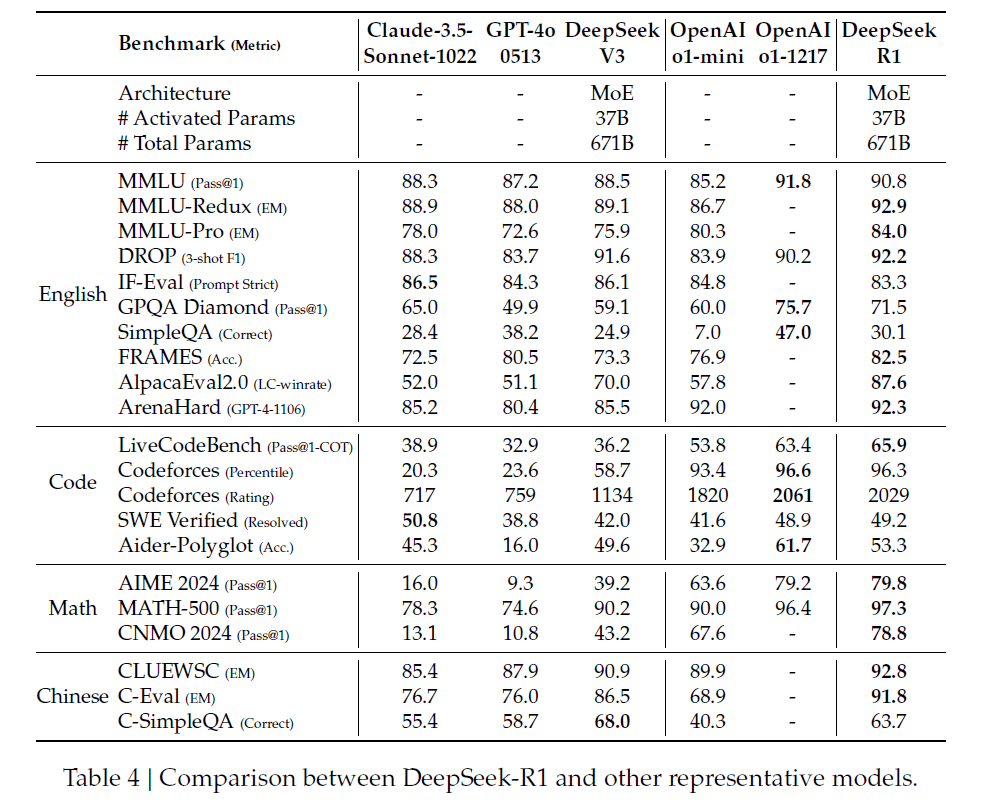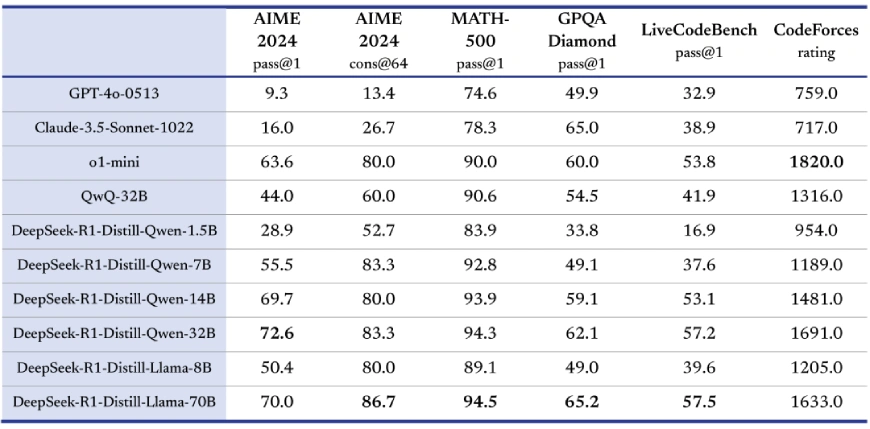OpenAI o1 vs DeepSeek R1: A Deep Dive into Reasoning AI
Jan 23, 2025A comparative analysis of OpenAI's o1 and DeepSeek's R1 reasoning AI models, examining their architectures, training, performance, and applications to understand their strengths and weaknesses in problem-solving.
OpenAI o1 vs DeepSeek R1: A Deep Dive into Reasoning AI
The landscape of artificial intelligence is rapidly evolving, with new models constantly emerging to challenge existing benchmarks. Among the most significant advancements is the development of "reasoning" AI, which focuses on enhancing problem-solving capabilities through self-verification and extended cognitive processing. Two prominent models in this space are OpenAI o1 vs DeepSeek R1 problem solving. This article delves into a comparative analysis of these models, examining their architectures, training methodologies, performance metrics, and practical applications to provide a comprehensive understanding of their strengths and weaknesses.
Understanding Reasoning AI Models
Traditional AI models often rely on rapid response generation, sometimes sacrificing accuracy for speed. Reasoning AI models, like DeepSeek-R1 and OpenAI's o1, represent a paradigm shift by allocating more computational resources and time to verify their outputs, significantly reducing errors. This approach aims to create more reliable and adaptable AI systems capable of handling complex tasks.
- Self-Verification: A key feature of reasoning models is their ability to self-fact-check, ensuring the accuracy of their responses.
- Extended Cognitive Processing: By dedicating more time to problem-solving, these models can explore and refine their thought processes.
- Reduced Errors: The emphasis on verification leads to a significant decrease in inaccuracies, making the models more trustworthy.
DeepSeek R1: An Open-Source Challenger
DeepSeek-R1, developed by Chinese AI firm DeepSeek, has emerged as a notable competitor to OpenAI's o1. It's designed with a focus on reasoning, leveraging a multi-stage training process that combines reinforcement learning (RL) and supervised fine-tuning (SFT). Notably, DeepSeek makes its models open-source, allowing researchers and developers to freely access, modify, and distribute them. This approach fosters collaboration and innovation within the AI community.
 Credit: the-decoder.com
Credit: the-decoder.com
DeepSeek-R1 distinguishes itself through its unique training methodology, which includes:
- Reinforcement Learning (RL): DeepSeek-R1-Zero, a precursor to DeepSeek-R1, is trained exclusively using RL, without any supervised fine-tuning. This allows the model to autonomously develop advanced reasoning capabilities.
- Cold-Start Initialization: DeepSeek-R1 incorporates human-annotated examples of long Chain-of-Thought (CoT) reasoning to initialize the training pipeline, improving readability and alignment with user expectations.
- Multi-Stage Training: The model undergoes a three-stage training process: cold-start data pretraining, reinforcement learning, and fine-tuning with rejection sampling.
- Distillation: Larger models are distilled into smaller versions, maintaining reasoning performance while reducing computational costs.
OpenAI o1: A Pioneer in Reasoning
OpenAI's o1 model marked a significant step forward in the domain of reasoning AI. It employs a chain-of-thought reasoning process to tackle problems, using reinforcement learning (RL) to hone its chain of thought and refine the strategies it uses. This allows o1 to recognize and correct its mistakes or try new approaches when the current ones aren’t working.
The o1 model is known for:
- Chain-of-Thought Reasoning: The model breaks down complex problems into a series of smaller, more manageable steps.
- Reinforcement Learning: RL is used to optimize the model's reasoning process, improving its accuracy and efficiency.
- Mistake Correction: o1 learns to identify and correct its errors, leading to more reliable results.
Performance Benchmarks: OpenAI o1 vs DeepSeek R1 problem solving
Both DeepSeek-R1 and OpenAI's o1 have demonstrated strong performance on various AI benchmarks, showcasing their advanced reasoning capabilities. However, certain nuances exist in their respective strengths and weaknesses.
| Benchmark | DeepSeek-R1 | OpenAI o1 |
|---|---|---|
| AIME 2024 (Pass@1) | 79.8% | 79.2% |
| MATH-500 (Pass@1) | 97.3% | 96.4% |
| Codeforces | 2029 | N/A |
| MMLU | 90.8% | 91.8% |
- Mathematics: DeepSeek-R1 has shown exceptional performance in mathematics-intensive benchmarks, such as AIME 2024 and MATH-500, even marginally outperforming o1 in some cases.
- Coding: The model excels in coding challenges, achieving a high rating on platforms like Codeforces, indicating its suitability for aiding developers.
- General Knowledge: While DeepSeek-R1 demonstrates strong general knowledge, OpenAI's o1 maintains a slight edge in benchmarks like MMLU.
It is important to note that DeepSeek also released distilled versions of the R1 model, ensuring that smaller, computationally efficient models inherit the reasoning prowess of their larger counterparts. These distilled models outperform open-source competitors and compete effectively with proprietary models like OpenAI’s o1-mini.
 Credit: analyticsvidhya.com
Credit: analyticsvidhya.com
Real-World Applications
The advanced reasoning capabilities of DeepSeek-R1 and OpenAI's o1 make them well-suited for a wide range of real-world applications.
- STEM Education: Excelling in math-intensive benchmarks, these models can assist educators and students in solving complex problems.
- Coding and Software Development: With high performance on platforms like Codeforces, DeepSeek-R1 is ideal for aiding developers in coding tasks.
- Financial Analysis: Both models can perform complex financial analysis, such as generating SQL queries for data retrieval and processing.
- Algorithmic Trading: The models can be used to create algorithmic trading strategies, generating configurations for portfolios based on market data.
Cost and Accessibility
A significant differentiator between OpenAI o1 vs DeepSeek R1 problem solving lies in their cost and accessibility. OpenAI's o1 is a proprietary model with a premium price, while DeepSeek has made its R1 model freely available for everyone to try in their chat interface. This open-source approach democratizes access to high-quality reasoning capabilities, reducing barriers to adoption.
DeepSeek-R1's API is also significantly more affordable than OpenAI's o1, with a base input cost as low as $0.14 per million tokens for cache hits. This cost-effectiveness makes DeepSeek-R1 an attractive alternative for developers and businesses seeking to leverage advanced AI capabilities without incurring exorbitant expenses.
Limitations and Challenges
Despite their impressive capabilities, both DeepSeek-R1 and OpenAI's o1 have certain limitations and challenges.
- Logical Consistency: DeepSeek-R1 has been shown to struggle with logic puzzles and other logic-based tasks, indicating an area for improvement.
- Security Vulnerabilities: The model is susceptible to jailbreaking, allowing users to bypass safeguards and generate inappropriate content.
- Censorship: DeepSeek-R1 appears to block queries deemed too politically sensitive, reflecting the influence of governmental pressures on AI projects in China.
- Invalid SQL Queries: The R1 model may occasionally generate invalid SQL queries, requiring self-correcting logic to rectify the errors.
The Future of Reasoning AI
The emergence of DeepSeek-R1 and OpenAI's o1 signals a transformative phase in AI development. These models represent a shift towards prioritizing reasoning accuracy and efficiency over sheer computational scaling. As the AI landscape continues to evolve, the following trends are likely to shape the future of reasoning AI:
- Increased Focus on Transparency: As AI models become more sophisticated, there will be a growing demand for transparency in their decision-making processes.
- Emphasis on Ethical Considerations: The ethical implications of AI, particularly in areas such as bias and censorship, will require careful consideration and mitigation.
- Democratization of Access: Open-source initiatives like DeepSeek-R1 will play a crucial role in democratizing access to advanced AI capabilities, fostering innovation and collaboration.
Conclusion
OpenAI o1 vs DeepSeek R1 problem solving represents a fascinating case study in the evolution of reasoning AI. While both models have demonstrated significant advancements in problem-solving capabilities, they differ in their architectures, training methodologies, cost, and accessibility. DeepSeek-R1's open-source nature and cost-effectiveness make it an attractive alternative to OpenAI's o1, while its limitations in logical consistency and security highlight the ongoing challenges in creating robust and reliable AI systems. As the field of AI continues to evolve, these models will undoubtedly play a crucial role in shaping the future of problem-solving and decision-making across various industries.